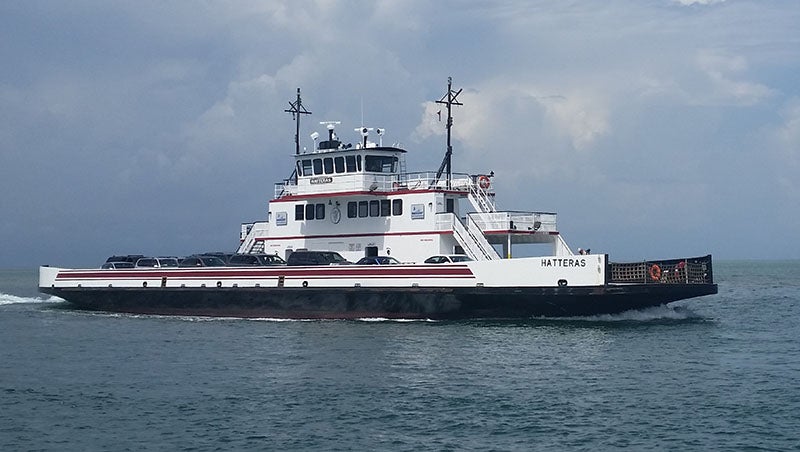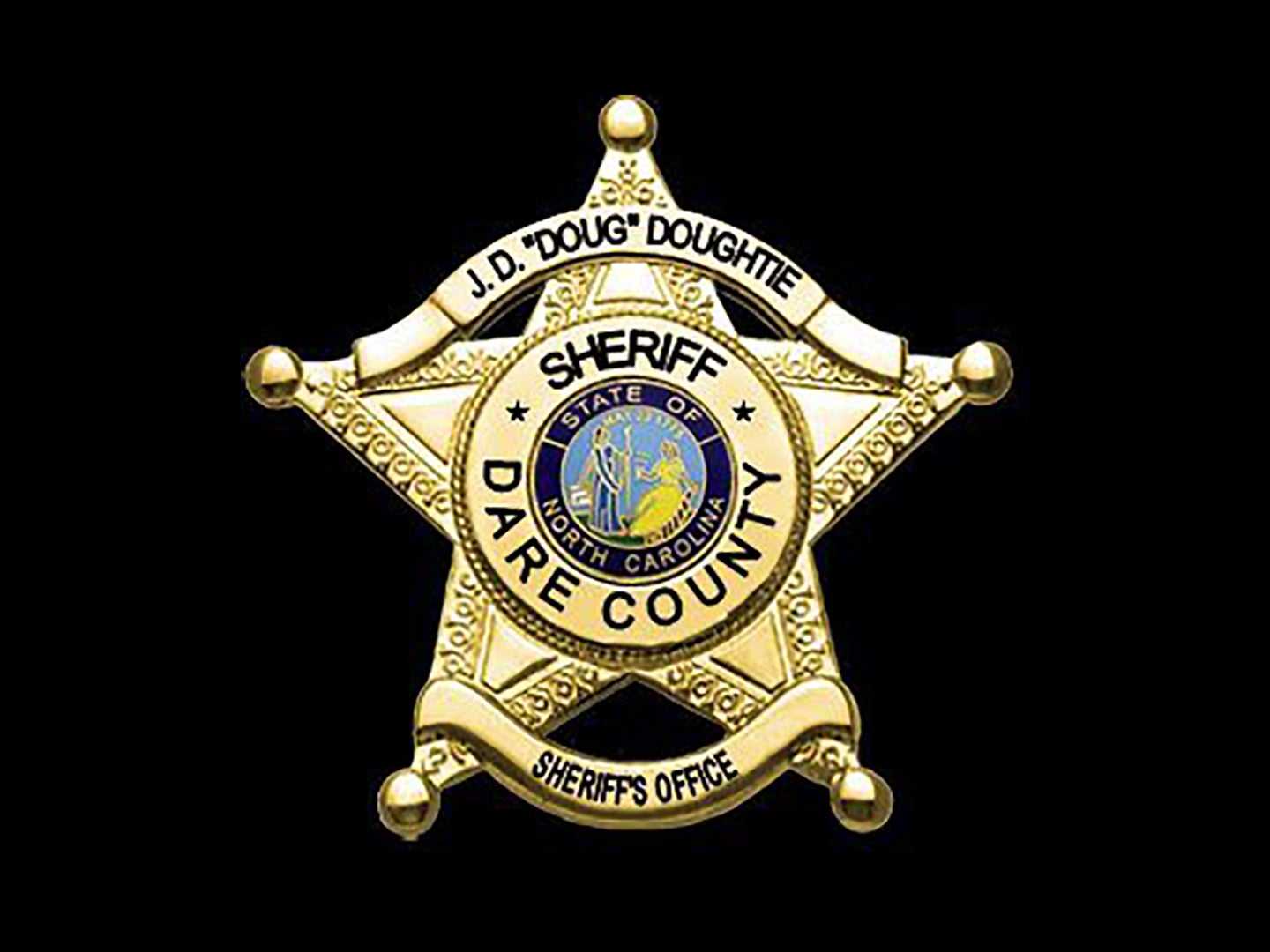Science on the Sound presentation tackles homeowners, flood insurance
Published 12:06 pm Monday, September 16, 2024

- At a Science on the Sound lecture at the Coastal Studies Institute, professor Don Hornstein explains why insurance rates in North Carolina are increasing. Summer Stevens photo
|
Getting your Trinity Audio player ready...
|
Science on the Sound lecture series season kicked off August 28 at the Coastal Studies Institute (CSI) on the ECU Outer Banks Campus in Wanchese.
Professor Don Hornstein, a Thomas F. Taft Distinguished Professor at UNC School of Law and a member of the board of directors of the NC Insurance Underwriters Association (NCIUA), a $1 billion nonprofit that insures the state’s coastal properties, gave a lecture entitled “What in the World is Happening with Homeowners and Flood Insurance at the North Carolina Coast?”
With a practical yet engaging style, Hornstein shared with the audience – comprised of community members, CSI students, and local leaders – about the changes in homeowners insurance in recent years and the reasons for the dramatic rate increases.
“Hands down flood risks are the biggest risk facing the country, facing the coast – it’s all about flood,” Hornstein said, speaking on his own authority and not on behalf of NCIUA.
In the beginning of the year, insurance companies in the state asked for a significant rate increase through the NC Rate Bureau, the organization that sets and approves rate changes. Insurers were asking for rate hikes up to 100% in some counties, but on average, the ask was for about a 40% increase. In Dare, Currituck and Hyde beach areas, known as territory 110, the request was for 45.1%.
Insurance Commissioner Mike Causey rejected the request and scheduled a hearing for October 7. However, the two groups are still negotiating and may reach an agreement before October.
Regardless of what the rate bureau decides, insurance companies can still charge customers more pursuant to “consent to rate.” If a customer agrees (reasons ranging from avoiding the hassle with bundled insurance or because they like their current carrier), the insurance company can still charge a higher rate.
For those in the audience wondering what is coming for homeowners insurance rates, Hornstein was clear: “You’re going to get a rate increase. I’m just going to tell you flat out. I don’t care whether there’s a hearing, I don’t care if it’s settled ahead of time, I don’t care if it’s settled later. There’s going to be a rate increase.”
Hornstein said historically there are always rate increases, and he guessed the range would be 8-12%.
To answer the why, he showed a chart of the top 10 hurricanes in terms of financial loss in the United States. Though Hurricane Katrina in 2005 tops the list with $160.2 billion in loss, what Hornstein noted in the chart is that half of the storms on the list are from the last 8 years.
“In all of US history – 250 years – half [of the storms on the Top 10 list] happened in the last eight years,” Hornstein said.
In 2017, Harvey, Maria and Irma wreaked havoc across the country, and in 2018, Michael and Florence caused major damage. Those five storms totaled a staggering $320 billion in loss.
“That’s a lot of money that’s lost,” Hornstein said. “That’s the first thing that you need to appreciate.”
The second thing, he said, is that you can’t estimate damage just by wind speed. Some storms like Florence, which caused massive flooding over a large area, registered at only a CAT 1 but had about the same amount of financial loss as CAT 4 Michael. “These storms are more frequent and there are more ways to hurt us. Insurers know this,” Hornstein said.
Additionally, homes are worth more money and there is more development in storm-vulnerable areas than in prior years.
To explain why we’re in our current situation, Hornstein reminded the audience that since 1968, all insurers refused to cover flood. (The result was the National Flood Insurance Program [NFIP], a government program currently managed by FEMA.) In 1990, many of the big insurance companies stopped being willing to cover wind, also.
“They would simply leave the market. They don’t really care about fighting about the rate they just left because they figured, ‘We cannot charge enough money to make it up. We can read the numbers.’”
Nationwide, Allstate and Farmers dropped hundreds of thousands of policies back in 2008 after a wave of storms in Florida and the Southeastern United States.
“Right now we’re in the middle of a second round of insurer exits,” Hornstein declared. Citing a recent news article about the exit of Farmers Insurance from Florida, he said that Florida no longer has any major insurers willing to offer homeowners insurance. They are left with small, poorly rated companies. Louisiana and California, equally, have no major insurers.
Close to home, a year ago Nationwide dropped 10,000 policies in North Carolina, about half of those in coastal areas.
“Insurance companies can and will walk if they want to,” Hornstein said.
Part of how insurance companies manage these challenges is through reinsurance, which is, Hornstein said, like insurance for insurance companies. Prices in the global reinsurance market have increased also, between 25 and 50%, which contributes to overall rate increases.
Fifteen years ago, Farmers Insurance gave notice that it was exiting North Carolina because it was costing too much. According to Hornstein, then-current legislation said that the insurers would be on the hook for almost unlimited liability in the event of a giant storm. When they complained and nothing happened “they voted with their feet.” This created panic at the General Assembly, with fears that Farmers’ exit would create a domino effect with other insurers. As a result, state legislators created a study commission to solve the problem.
Hornstein was appointed to the commission because of his work in economics and risk and his background in teaching insurance law, along with other experts in the insurance industry.
NCIUA, sometimes referred to as the “beach plan” is the state’s “insurer of last resort.”
Though he wondered what he would bring to the commission, his worth was quickly realized after Texas’ Hurricane Ike in 2008. He put an iconic aerial photo on the screen of the Boulevard Peninsula with staggering destruction – save one. One butter yellow house stands unscathed beside dozens of flattened homes.
“What about that one house that is still there more or less intact?” he asked.
After some research, Hornstein discovered that that home was built above code – meaning the builders made the house more resilient to storms beyond what the local regulations required.
“And it worked,” Hornstein exclaimed.
Besides just covering risk, his idea was to create an incentive for homeowners to make their homes more resilient to storms. The commission liked his plan and quickly adopted it.
Based on research performed at the Insurance Institute for Business and Home Safety (IBHS), which simulates storms using massive wind tunnels, the organization discovered that a fortified roof was the first and best line of defensive during a storm event.
A “super roof” or Fortified Roof consists of 4×8 sheets of plywood nailed down with scored nails that won’t pop up with wind pressure, sealed at the edges using a durable tape, then followed by roofing shingles.
Crunching the numbers, Hornstein said if NCIUA spent $50 million on IBHS Fortified Roofs, they would make $67 million in 10 years because of fewer losses and lower reinsurance costs. And, with rising reinsurance costs, the estimated savings was more like $200 million.
In 2016, NCIUA presented a new plan for NC policyholders – if you lose a roof for any reason, they’ll replace it and then put on a super roof for free. The program was so popular and made so much financial sense the company now offers grants for homeowners to put on a super roof.
There are about 13,000 super roofs in the Outer Banks and Hornstein estimates that number will double in 2024. “We’ll suddenly have 25 or 26,000 homes with these super roofs paid largely by us and we make money from it and our policy holders are more secure,” he said.
The NCIUA also rewrote the structure of who is responsible during a major storm event over $1 billion in losses. Insurers in the state used to be held responsible to an unlimited amount of money, even if they weren’t holding the policy. Simply doing business in North Carolina made them liable. One of the big compromises to encourage large insurers to continue doing business in the state was to cap that liability at $1 billion. They agreed, happily, Hornstein said because previously there was no cap.
Hornstein finished his lecture with an encouragement for communities to embrace changes that can make it more resilient to flooding through a program called Community Rating System (CRS). These can be changes like hardscapes, wetland mitigation banks, or even small things like paying people to elevate their utilities to get them off the ground. Through the CRS, these changes equal credits for homeowners, and ultimately, will offset the rate increases that are inevitably coming.
Manteo residents Sarah and Rodney Benson attended the lecture as part of their desire to be lifelong learners. “We are interested in our community and the offerings are helpful and insightful,” Sarah said of the lecture series.
And her takeaway from the event?
“We plan to pursue a new fortified roof.”
SUBSCRIBE TO THE COASTLAND TIMES TODAY!






